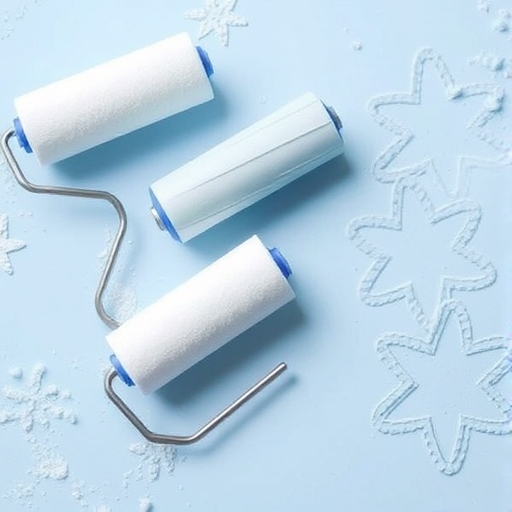How to Clean Paint Rollers: A Comprehensive Guide
Cleaning paint rollers can seem like a daunting task, especially after a long day of painting. However, properly cleaning and maintaining your paint rollers is crucial for extending their lifespan, ensuring optimal performance, and saving money on future projects. In this guide, we will cover everything you need to know about cleaning paint rollers effectively, including tools, techniques, and tips.
Why Clean Paint Rollers?
Before diving into the cleaning process, let’s discuss why it’s essential to clean your paint rollers:
-
- Cost-Effective: Paint rollers can be expensive, and cleaning them properly can help you save money in the long run by extending their lifespan.
- Quality of Work: Residual paint can affect the quality of your next painting project. Cleaning ensures that you won’t have any unwanted colors or textures in your next coat.
- Health and Safety: Old paint can contain harmful chemicals. Cleaning your tools helps maintain a safe working environment.
Tools and Materials Needed
Before you start cleaning your paint rollers, gather the following tools and materials:
-
- Paint Roller Tray: For rinsing and cleaning.
- Water: For water-based paints, use warm water. For oil-based paints, use paint thinner or mineral spirits.
- Bucket: To hold the cleaning solution.
- Scraper or Putty Knife: To remove excess paint.
- Gloves: To protect your hands from paint and solvents.
- Old Rags or Paper Towels: For wiping and drying.
- Wire Brush or Roller Cleaner: Optional, for tough jobs.
Step-by-Step Guide to Cleaning Paint Rollers
Step 1: Remove Excess Paint
The first step is to remove as much excess paint as possible:
-
- Scrape Off Paint: Use a scraper or putty knife to gently scrape off any excess paint from the roller. Be careful not to damage the roller cover.
- Roll on Newspaper: Roll the paint roller on a sheet of newspaper or cardboard to remove more paint. This can help absorb a lot of the remaining paint.
Step 2: Rinse with Water (Water-Based Paints)
For water-based paints, follow these steps:
1. Fill a Bucket or Tray with Warm Water: Make sure the water is not too hot, as it can damage the roller material.
2. Submerge the Roller: Dip the roller into the bucket or tray, allowing it to soak for a few minutes.
3. Agitate the Roller: Gently move the roller up and down in the water, allowing the paint to loosen.
4. Rinse Under Running Water: After soaking, place the roller under running water to wash away any remaining paint. Continue rinsing until the water runs clear.
Step 3: Clean with Solvent (Oil-Based Paints)
For oil-based paints, cleaning requires a different approach:
1. Use Paint Thinner or Mineral Spirits: Pour some into a bucket or tray, following the manufacturer’s safety guidelines.
2. Soak the Roller: Submerge the roller in the solvent for a few minutes.
3. Agitate the Roller: Move the roller around in the solvent to help dissolve the paint.
4. Wipe with a Rag: After soaking, wipe the roller with an old rag to remove any remaining paint.
5. Rinse Under Running Water: If you’re switching to a water-based paint, rinse the roller under warm water to remove any solvent.
Step 4: Final Rinse and Drying
1. Final Rinse: Ensure that all paint and cleaning agents are removed by rinsing thoroughly.
2. Shake Off Excess Water: Hold the roller by the handle and shake it to remove excess water.
3. Dry the Roller: Use an old rag or paper towels to wipe down the roller. Allow it to air dry completely before storing.
Tips for Efficient Cleaning
- Clean Immediately After Use: The sooner you clean your paint rollers after use, the easier it will be to remove the paint.
- Use a Roller Cleaner Tool: These tools can make the cleaning process faster and more efficient.
- Avoid Hot Water for Oil-Based Paints: Hot water can make oil-based paint harder to remove.
- Use Protective Gear: Always wear gloves and work in a well-ventilated area when using solvents.
Cleaning Methods for Paint Rollers
| Cleaning Method | Suitable For | Materials Needed | Difficulty | Time Required |
|---|---|---|---|---|
| Water Rinse | Water-Based Paints | Warm water, bucket, scraper | Easy | 10-15 minutes |
| Solvent Rinse | Oil-Based Paints | Paint thinner/mineral spirits, bucket | Moderate | 15-20 minutes |
| Roller Cleaner Tool | Both Types of Paint | Roller cleaner tool | Easy | 5-10 minutes |
Frequently Asked Questions (FAQ)
How often should I clean my paint rollers?
You should clean your paint rollers immediately after each use to prevent the paint from drying and hardening.
Can I reuse paint rollers?
Yes, you can reuse paint rollers as long as they are properly cleaned and dried after each use.
What should I do if my roller cover is damaged?
If the roller cover is damaged or worn out, it’s best to replace it. Attempting to clean a damaged roller may lead to poor results in your next painting project.
Is it safe to use paint thinner indoors?
Using paint thinner indoors can be hazardous due to fumes. Always work in a well-ventilated area and consider using a mask if necessary.
Can I wash paint rollers in the washing machine?
It is not recommended to wash paint rollers in the washing machine as it can damage both the roller and your machine. Hand cleaning is preferred.
Conclusion
Cleaning paint rollers doesn’t have to be a chore. By following the steps outlined in this guide, you can ensure that your paint rollers remain in good condition for future projects. Whether you are using water-based or oil-based paints, proper cleaning techniques will save you time and money while maintaining the quality of your painting work.
Remember, the key to effective cleaning is to act quickly and use the right materials for the job. Happy painting!

